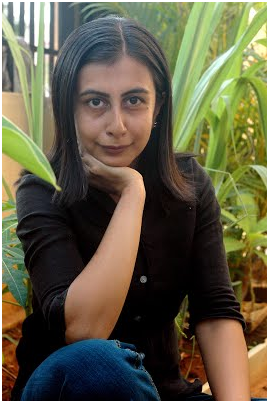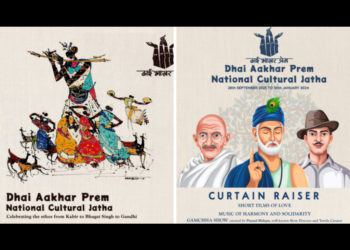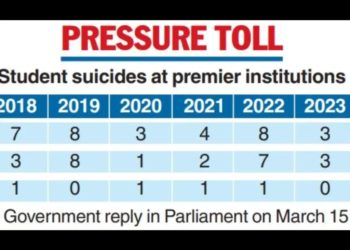Neha Kirpal in Conversation with Anjum Hasan
 Image courtesy http://www.anjumhasan.com
Image courtesy http://www.anjumhasan.com
“Several disconnected planes were coming together on the canvas of her life making her feel that the Cubists were right — look closely and the whole picture is not singular but a series of conjoined truths.”
Anjum Hasan began her writing stint with Street on the Hill (Sahitya Akademi, 2006), a compilation of poems, followed by her debut novel, Lunatic in my Head (Zubaan-Penguin, 2007). Then came Neti, Neti (Roli Books, 2009), which was longlisted for the Man Asian Literary prize in 2008. In 2012, she wrote Difficult Pleasures (Penguin India, 2013), a collection of short stories about the need to escape and the longing to belong. Her most recent book The Cosmopolitans (Penguin Books India, 2015) is filled with “arty chit-chatter”with snippets about contemporary art, European modernism and demonstrations on M.G. Road.
The book — for all lovers of art, and lovers of the written word — is interesting mostly for its cast of fictional characters from the art scene in Bangalore — the world-famous Babban Reddy, “a dazzling star in the skies of art”, to the controversial Nur Jehan, “one of its most mysterious planets”.
Here is a visually evocative excerpt that struck me:
As she dug deeper, pulling out 45 RPMs with faded covers and wrinkled lifestyle magazines, the room started to fill up with an old-time aura: Nehru’s freedom-at-midnight speech, the Progressive Writers’ movement, couples jiving to live bands in restaurants called Kwality and Gaylord, the startling emptiness of Marine Drive, the rumour that Dev Anand looked life Gregory Peck, the illustrious poetry of Faiz, the smoky voice of Talat Mehmood and the broody fiction of the French existentialists.
Flipping through yellowed pages, Qayenaat thought, suddenly, of the Mamas & The Papas singing in the late 1960s, "If you’re going to San Francisco, be sure to wear some flowers in your hair." Her parents’ generation read foreign novels out of reverence; her own listened to the music of the Western liberation and dreamt. They knew they weren’t going to San Francisco and therein lay the song’s vicarious appeal. And then there was Baban’s generation for whom the West was no longer a big deal; they could suddenly stand up one day and announce they were going to be artists, ready to take on the world. However much she adored Baban, Qayenaat could never be like that. Her generation was the shy, ambivalent, in-between ones, no longer thoroughbred patriots but not confident MTV-era brats either.
I spoke to her among other things about the idea of freedom in the context of today’s literary environment.
When do you feel most free?
Walking around in the streets of Bangalore, Shillong, or Coorg—the three places that I live in simultaneously in my head and sequentially in time. Relative to other Indian cities and towns, all these three places are kind to women, which helps a great deal.
Could you highlight some issues related to freedom of speech which have you focused on in your books?
My latest novel, The Cosmopolitans, features various characters discussing the right of an artist to paint her pictures, pictures which some people find offensive. I haven’t focused on the ‘issue’ in the sense of editorialising about it. That’s not quite how fiction works. I was interested in exploring how different people might debate the point, what the sound of that conversation could be like.
Looking at recent literary events, please talk a little on the subject of intimidation of authors by individuals or small self-appointed groups, or the state/central government.
The growing intimidation makes me wonder what went wrong with our culture, and at which point, for this to have become acceptable. Up until a couple of decades ago, writers were figures whose contrarian, critical approach is exactly what made them worth listening to—Tagore and Premchand in one generation, say, U.R. Ananthamurthy and Mahasweta Devi in the next. We have to ask ourselves the larger question: what is the significance of the writer in today’s culture? That diminishment is the backdrop against which these attacks are taking place.
What is the one thing you are afraid of?
My subconscious, which is where all the unpleasant things go to hide. It can sometimes throw up nasty surprises.
What are your views on self-censorship?
I have never felt the need to censor myself.
Your thoughts on writings by "marginal" voices?
The marginal and the mainstream both are representative categories and literature, to me, is more about individual voices rather than representative ones. So I’m wary of holding up something because it’s, ostensibly, marginal.
What, according to you, is the idea of India?
I think we expend far too much effort discussing the nature of the nation state as against real life lived within its boundaries. We are obsessed with this wholly castle-in-the-air abstraction and it’s become, I feel, a dangerous obsession.
What do you think about the right to dissent?
I defend it. We are still a very conservative society but with a very strong, modern progressive tradition to draw on if we want to. We need to defend that tradition as well.
Lastly, what is the worldview of your work, and what are the strategies that you use to project this view?
I hope there is no single worldview operating here, and that I can populate my fiction with the voices of divergent individuals, even those completely at odds with each other. Having said that, I’ve found myself returning to the position of characters who are at an angle to the Indian middle class, not making a full-out war with it but definitely in flight from it in some way.
Neha Kirpal is the author of Wanderlust for the Soul. Her blog is nehakirpal.wordpress.com.




